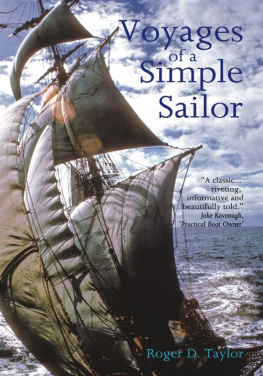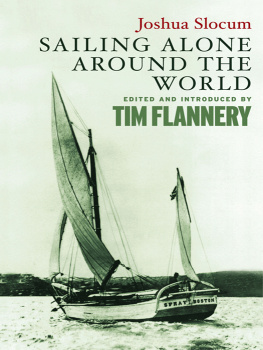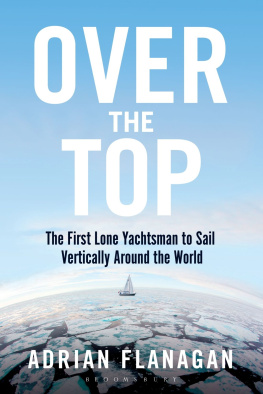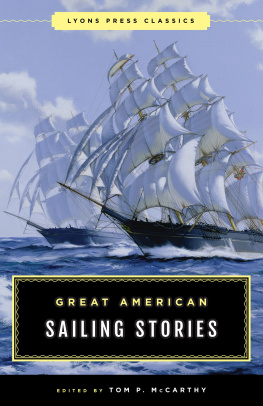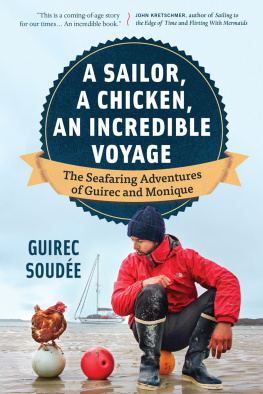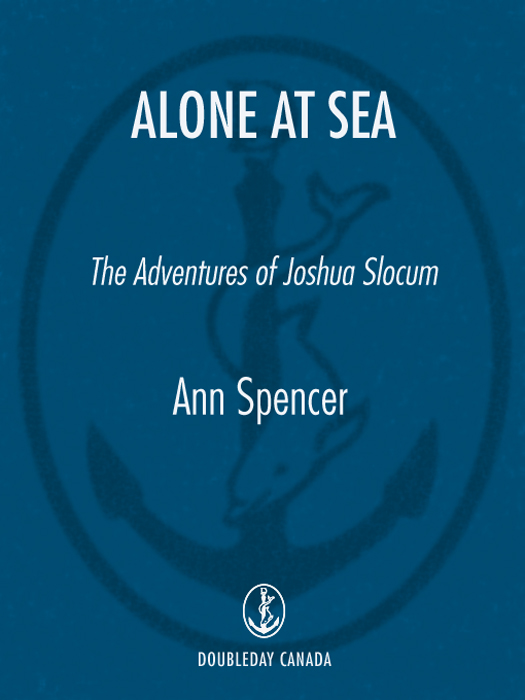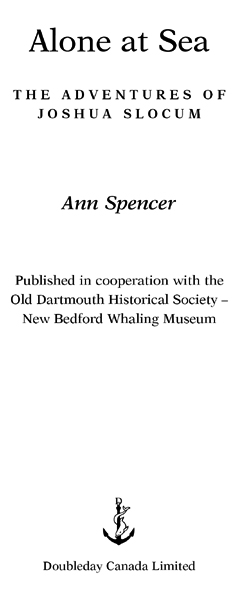Copyright 1998 Ann Spencer
All rights reserved. The use of any part of this publication reproduced, transmitted in any form or by any means, electronic, mechanical, photocopying, recording, or otherwise, or stored in a retrieval system, without the prior consent of the publisher or, in case of photocopying or other reprographic copying, a licence from the Canadian Reprography Collective is an infringement of the copyright law.
Canadian Cataloguing in Publication Data
Spencer, Ann
Alone at sea
eISBN: 978-0-385-67407-2
1. Slocum, Joshua, b. 1844. 2 Sailors Canada Biography. 3. Voyages around the world. 4. Spray (Sloop). 5. Sailing, Single-handed. I. Title.
G440.S63S63 1998 910.45092 C98-930071-4
Letters from Henrietta Slocum in Appendix 3 courtesy Nova Scotia
Archives and Records Management/MG100 Vol. 94
Published in Canada by
Doubleday Canada,
a division of
Random House of Canada Limited
v3.1
To Jo and Joe, who helped me understand the intricacies of solo sailing and the courage and skill it requires.
CONTENTS
Preface
Early in September of 1997 I sat on the edge of a cliff where land ended and the Atlantic Ocean began. I was on Brier Island, Joshua Slocums boyhood home in the Bay of Fundy. The smell of salt water was riding the wind, and seabirds were calling. I sat with closed eyes and listened to the rhythms of the island. A constant pattern was all around: waves lapped on the shore directly below me, and the high-pitched sigh of a foghorn punctuated the lull, which startled an island rooster to crowing. The sounds echoed softly, before the sequence started up again. I tried to imagine how this vital environment had shaped the spirit of young Joshua Slocum, how it felt to be a ten-year-old boy running through the wind to the edge of this very cliff. It was Brier Island that had given young Joshua the sense that adventure and escape would always be found on the water, and the belief that a larger world lay just beyond the horizon. The sea coursed through his veins, and it would always beckon him, whatever its mood.
Brier Island inspired me. By the time I boarded the ferry back to the mainland, I had already embarked on a voyage of discovery. I had begun to get a sense of Joshua Slocums strength and his complexity. He was a master mariner who had followed his calling with an uncompromising spirit fueled by deep reserves of courage and humor. At the same time, he paid a high price for staying true to his passion: he was both a restless man and a profoundly sad one, and he was forever an outsider on dry land.
From Brier Island I traveled to New Bedford, Massachusetts, where the Whaling Museum houses the extensive Teller collection of documents about Slocum, as well as letters, photographs and other Slocum memorabilia. I owe a great debt to Walter Magnes Teller, Slocums biographer in the 1950s, and envy him for being the first to undertake this research. In the foreword to his 1956 biography, The Search for Captain Slocum, Teller wrote that his journey started with a chance reading of his [Slocums] book, and a chance discovery, at Marthas Vineyard, that people who knew him were still alive. For Joshua Slocum had disappeared at sea some forty years before. Intrigued, Teller began collecting stories and memorabilia relating to Slocum. Sadly, other peoples recollections were all that survived Slocums published books were still available, but his letters, logs and personal diaries and papers had been lost at sea with the Spray. It was also rumored that Slocums widow, Hettie, had burned much of the captains correspondence. Nevertheless, Teller pieced together a full and vibrant portrait of a determined man living on the edge of the twentieth century. It was through Tellers research that I became fascinated by Slocum the navigator, explorer, lecturer, shipwright, writer, and staunch individualist.
Some forty years after Teller, it was I who was searching for Captain Slocum. I felt certain there was more to be discovered, and new ways to approach what was already known about him. In my preliminary research at the Public Archives of Nova Scotia, I uncovered three letters that Teller had not seen. They were written by Slocums second wife, Hettie, to a captains wife in the Annapolis Valley, which was Slocums birthplace. In a letter dated 1910, Hettie wrote that her husband had been missing since he first set out in November 1908. This intrigued me right away, as this date contradicted every published account of Slocums disappearance, allegedly in 1909. It was quite possible that Hettie had her dates mixed up, but documents in the Teller collection almost exclusively mention the date of Slocums last sail as November 1908. The captains fate was now even more of a mystery than before.
The Teller collection is a feast of folk history. I pored over letters from Slocums sons, daughter, and relatives. All had similar memories of their mother, Joshuas extraordinary first wife, Virginia. By all accounts, Virginia was a woman of tremendous spirit and strength of character as well as beauty and grace. Her strong sense of beauty breathed life into the rugged existence aboard her husbands commands. Her navigational skills and, perhaps more importantly, her guiding intuition were said to have been Slocums mainstays. As Slocums son Ben Aymar remembered, one peep from her would have changed the whole picture.
The story of Joshua Slocum is of a mans life lived fully and uncompromisingly. He survived mutinies and shipboard epidemics of smallpox. He was challenged to duels, and shot and killed a member of his crew in self-defense. His wife and three of his children died in foreign ports, and he lost his fortune when he stranded an uninsured vessel. His three-year circumnavigation was, for him, as much a spiritual and emotional voyage as it was a quest to be historys first solo circumnavigator. His sad decline after the circumnavigation, and his mysterious death, add a mythic element to his life.
I wish to express my gratitude to the following people, who inspired and helped me along this literary voyage of discovery.
Many thanks to the people of Brier Island, especially to Phil Shea, Judy Joys, Nancy and Rolland Swift, and Carol and Bill Welch, who helped me understand what was indelibly etched in a boys soul.
Thank you to the following sailors, who helped me understand what calls someone to the sea: Tom Gallant talked seadog lingo to me and answered my many questions about why a sailor does what a sailor does. Tom has the true storytellers uncanny ability to find the choice words, explaining not only the mundane realities but the profound philosophy of a sailors life. Ed and Lainie Porter shared stories of their experience in gales, becalmings and fine weather along the coast of Maine. Lainie sang me sea songs and Ed answered any and all technical questions. I spent a Sunday morning around a Portsmouth, New Hampshire, kitchen table with Dean Plager, who told me how he came to pack up his office job and sail alone. His stories of unbroken horizons, phosphorescence and mirages fueled the chapter on solitude. Cam Allbright in Annapolis Royal shared stories of the challenges of sailing the Bay of Fundy, as well as his knowledge of celestial navigation. However, it was Cams thoughts on sailing as a spiritual discipline that helped me understand what Slocum meant when he wrote, Everything in connection with the sea would be eminently respectable and be told in spirituality.


